第二章 英译汉的翻译过程及英汉语言、文化对比 1
- 格式:ppt
- 大小:154.50 KB
- 文档页数:36
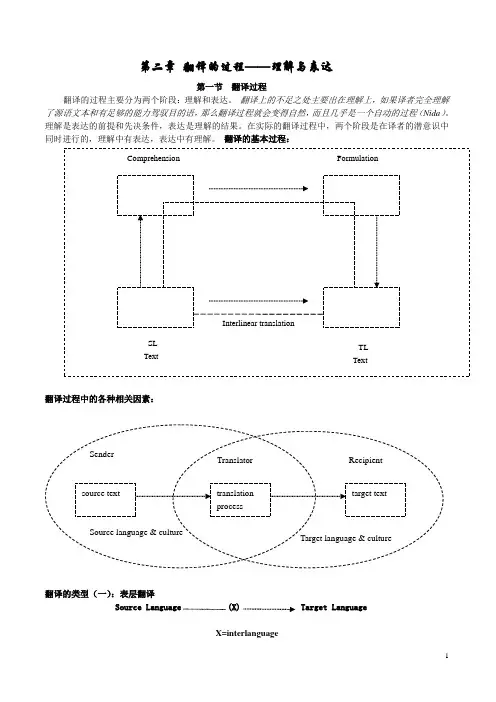
第二章翻译的过程——理解与表达第一节翻译过程翻译的过程主要分为两个阶段:理解和表达。
翻译上的不足之处主要出在理解上,如果译者完全理解了源语文本和有足够的能力驾驭目的语,那么翻译过程就会变得自然,而且几乎是一个自动的过程(Nida)。
理解是表达的前提和先决条件,表达是理解的结果。
在实际的翻译过程中,两个阶段是在译者的潜意识中同时进行的,理解中有表达,表达中有理解。
翻译的基本过程:翻译过程中的各种相关因素:翻译的类型(一):表层翻译Source Language (X) Target LanguageX=interlanguage翻译的类型(二):深层翻译(Source)(Target)(Analysis)(Restructuring)X(Transfer)翻译的类型(三)篇章翻译 PlaneT extual Processing PlanesT extual PlaneT SL =source-language text; T TL =target-language text第二节 理解与翻译要做到完全透彻的理解决非易事,而是一个极其复杂的过程。
“理解原作十分不易,需要语言修养,文化修养,各方面的知识”。
除了语言文化的差异之外,翻译中理解的复杂性主要表现在以下方面: 一、 口语与书面语的差别 二、语言与思想的不一致 三、时间因素的介入 四、文化障碍理解的步骤:1. 分析原语文本的词汇和语法特征He didn ’t come to the hospital because he was ill. Here lies one whose name was writ in water.2. 结合篇章语境进行分析I crossed the street to avoid him, but he saw me and came running towards me. It was no use pretending that I had not seen him, so I waved to him. I never enjoy meeting Bert Dykes.3. 分析原语文本的交际语境If you’re looking for a good job, we’re offering a thousand a week.An American journalist describes his first experience in learning Chinese as fo llows: “Mandarin, the dialect I’m wrestling with, has four tones. The first is spoken…with a high-pitched sound. The second tone rises. I think of calling to shore while wading into the waters of Maine.4. 结合原语的文化语境进行分析Milky Way It is a wet summer.第三节表达与翻译理解是表达的前提,表达是理解的结果。
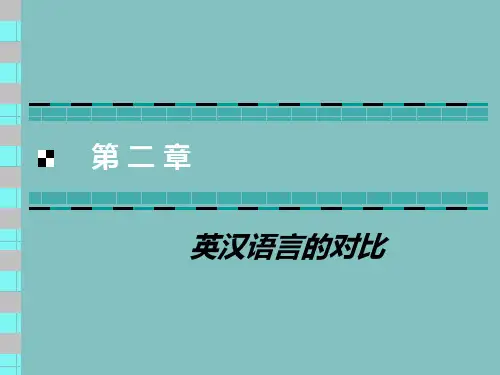
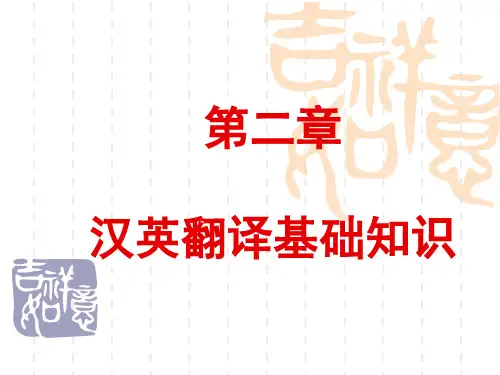
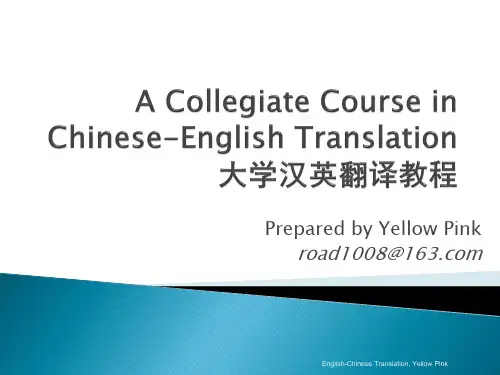
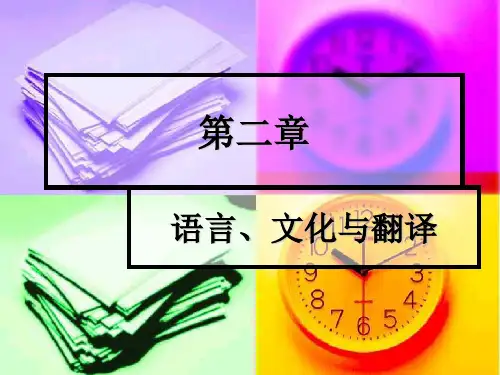
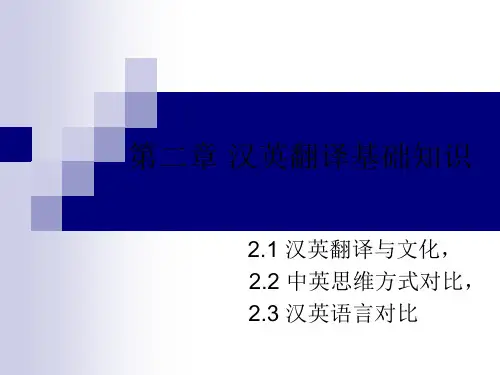
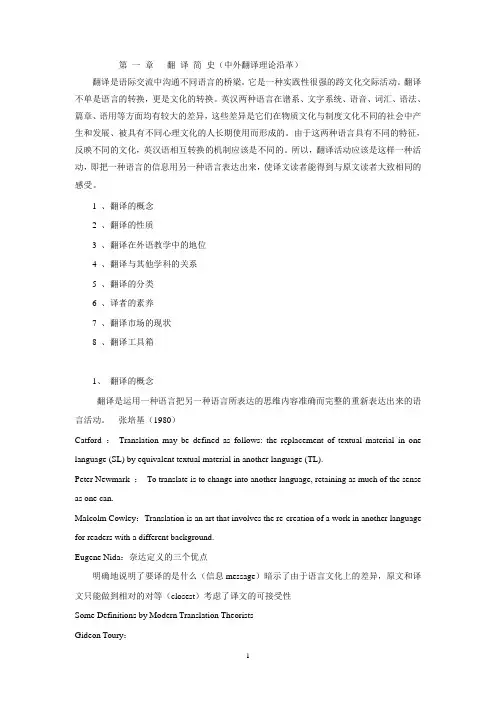
第一章翻译简史(中外翻译理论沿革)翻译是语际交流中沟通不同语言的桥梁。
它是一种实践性很强的跨文化交际活动。
翻译不单是语言的转换,更是文化的转换。
英汉两种语言在谱系、文字系统、语音、词汇、语法、篇章、语用等方面均有较大的差异,这些差异是它们在物质文化与制度文化不同的社会中产生和发展、被具有不同心理文化的人长期使用而形成的。
由于这两种语言具有不同的特征,反映不同的文化,英汉语相互转换的机制应该是不同的。
所以,翻译活动应该是这样一种活动,即把一种语言的信息用另一种语言表达出来,使译文读者能得到与原文读者大致相同的感受。
1 、翻译的概念2 、翻译的性质3 、翻译在外语教学中的地位4 、翻译与其他学科的关系5 、翻译的分类6 、译者的素养7 、翻译市场的现状8 、翻译工具箱1、翻译的概念翻译是运用一种语言把另一种语言所表达的思维内容准确而完整的重新表达出来的语言活动。
---张培基(1980)Catford :Translation may be defined as follows: the replacement of textual material in one language (SL) by equivalent textual material in another language (TL).Peter Newmark :To translate is to change into another language, retaining as much of the sense as one can.Malcolm Cowley:Translation is an art that involves the re-creation of a work in another language for readers with a different background.Eugene Nida:奈达定义的三个优点明确地说明了要译的是什么(信息message)暗示了由于语言文化上的差异,原文和译文只能做到相对的对等(closest)考虑了译文的可接受性Some Definitions by Modern Translation TheoristsGideon Toury:―A translation is taken to be any target-language utterance which is presented or regarded as such within the target cultur:e, on whatever grounds.‖Christiane Nord―Translation is the production of a functional target text maintaining a relationship with a given source text that is specified according to the intended or demanded function of the target text.‖Jean Sager:―Translation is an externally motivated industrial activity, supported by information technology, which is diversified in response to the particular needs of this fo rm of communication.‖吕俊:―翻译是一种跨文化的信息交流与交换活动,其本质是传播,是传播学中一个有特殊性质的领域。
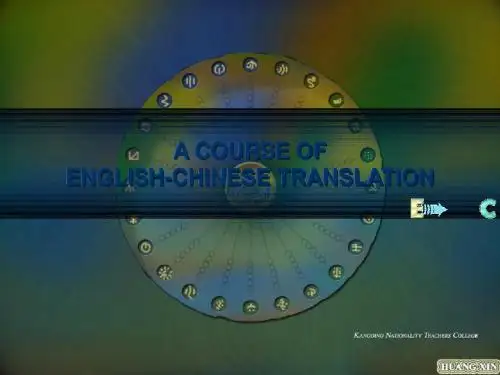
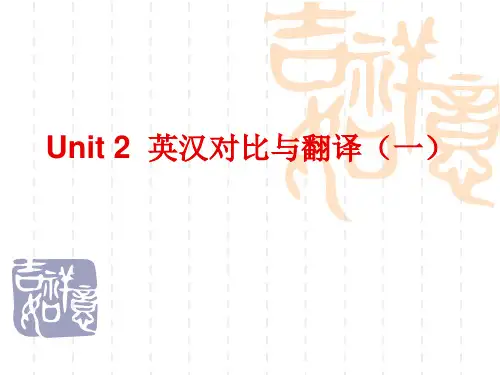

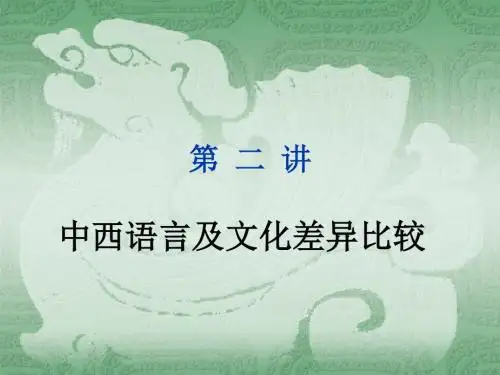
第二章汉英翻译基础知识-汉英翻译与文化根据《现汉》,“文化”有三个定义:1.人类在社会历史发展过程中所创造的物质财富和精神财富的总和,特指精神财富,如文学、艺术、教育、科学等;2.考古学用语,指同一历史时期的不依分布地点为转移的遗迹、遗物的综合体。
同样的工具、用具,同样的制造技术等,是同一种文化的特征,如仰韶文化、龙山文化;3.指运用文字的能力及一般知识,学习~/~水平。
而在 OALED 中, culture 的定义是①:1 [U] (a) refined understanding and appreciation of art, literature,etc. (对于文艺等的深刻的了解和鉴赏) (b) (often derog. 常作贬义) art, literature, etc. collectively 文化(文学、艺术等的总称)2 [U] state of intellectual development of a society 文化(一个社会智力发展的状况)3 [U, C] particular form of intellectual expression, e. g. in art and literature 文化(智力表现的形式,如体现于文艺方面)4 [U, C] customs, arts, social institutions, etc. of a particular group or people 文化(某群体或民族的风俗、人文现象、社会惯例等)5 [U] development through training, exercise, treatment, etc. 锻炼、训练、修养6 [U] growing of plants or rearing of certain types of animals (e. g. bees, silkworms, etc.) to obtain a crop or improve the species (植物的)栽培;(动物,如蜂、蚕等,良种的)培育7 [C] (biology 生) group of bacteria grown for medical or scientific study 培养的细菌。